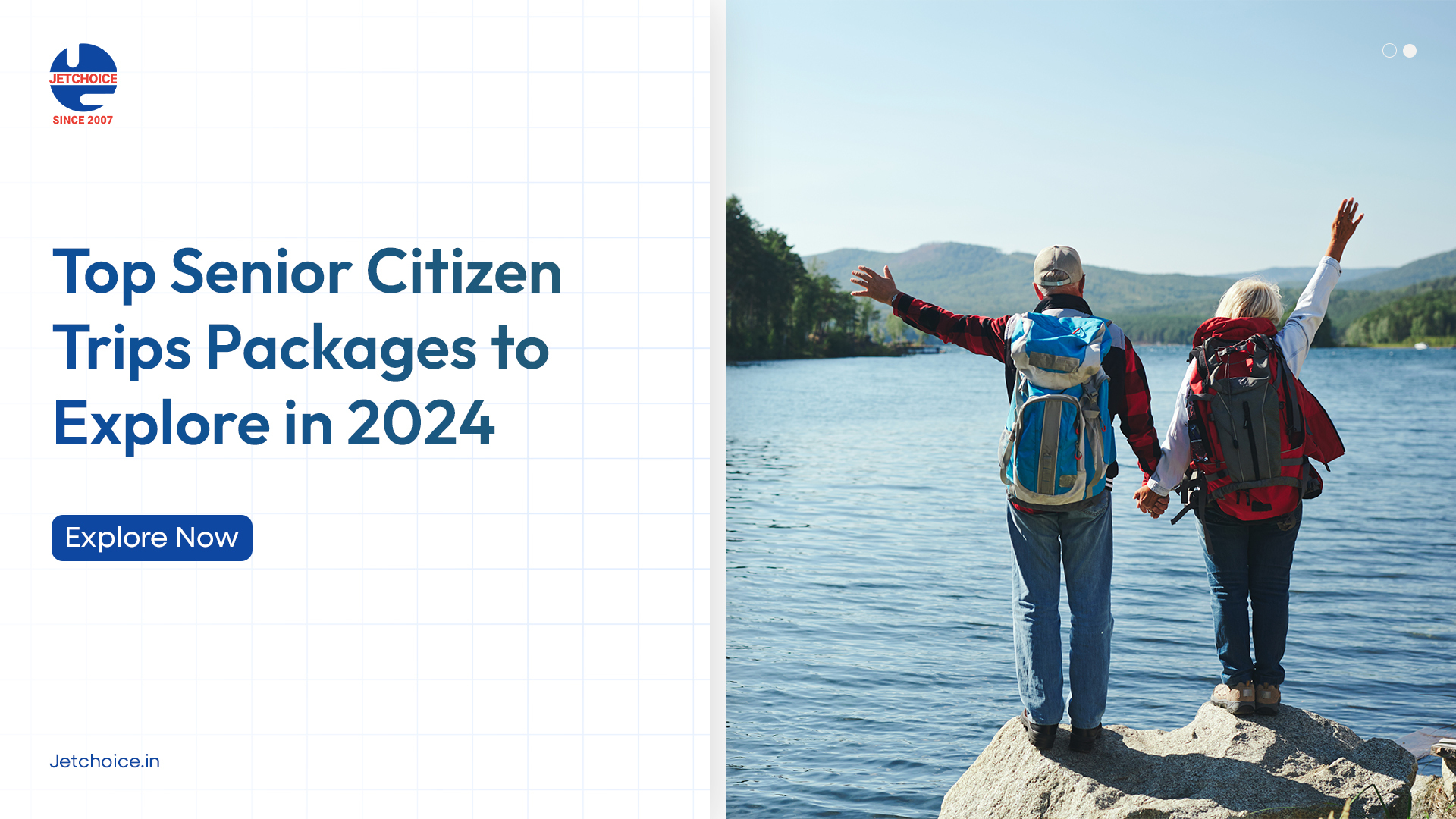Senior citizen trips offer a unique opportunity to explore the world, relax, and create lasting memories. Whether you envision adventurous excursions or tranquil retreats, careful planning ensures a safe and enjoyable experience. This guide delves into various trip types, practical considerations, and essential tips to help you design the ideal senior travel adventure.
From selecting the perfect destination to arranging accessible accommodations and transportation, we’ll cover everything you need to know. We’ll explore different budgeting strategies, health and safety precautions, and the advantages of both group and independent travel. Ultimately, the goal is to empower you to embark on a memorable journey tailored to your specific needs and preferences.
Types of Senior Citizen Trips
Planning a senior citizen trip requires careful consideration of the traveler’s physical abilities, interests, and budget. A well-chosen trip can offer enriching experiences, promote social interaction, and contribute to overall well-being. The diverse options available ensure there’s a perfect getaway for every senior.
Adventure Travel for Seniors
Adventure travel for seniors focuses on providing exciting experiences while prioritizing safety and comfort. Trips might involve less strenuous activities like gentle hiking, wildlife viewing safaris with accessible vehicles, or scenic train journeys through breathtaking landscapes. The emphasis is on experiencing the thrill of exploration without compromising physical well-being. Benefits include increased physical activity tailored to individual capabilities, a sense of accomplishment, and the creation of lasting memories. For example, a guided walking tour of a national park with rest stops and accessible trails caters to varying fitness levels.
Cultural Tours for Seniors
Cultural tours are designed to immerse seniors in the history, art, and traditions of different regions. These trips often involve visits to museums, historical sites, and local cultural events. The pace is typically relaxed, allowing ample time for exploration and reflection. Benefits include intellectual stimulation, exposure to diverse cultures, and opportunities for social interaction with fellow travelers. A classic example is a guided tour of European capitals, including visits to art galleries and historical landmarks with comfortable transportation and accessible accommodations.
Relaxation Vacations for Seniors
Relaxation vacations prioritize rest, rejuvenation, and stress reduction. These trips often involve stays at luxurious resorts or spas, with access to amenities such as pools, hot tubs, and wellness treatments. The focus is on creating a peaceful and calming environment. Benefits include improved physical and mental health, reduced stress levels, and increased relaxation. A senior might choose a tranquil beach resort offering spa treatments, yoga classes, and quiet meditation areas.
Cruises for Seniors
Cruises offer a convenient and comprehensive travel experience, combining transportation, accommodation, and entertainment in one package. Many cruise lines cater specifically to seniors, offering accessible cabins, adapted facilities, and shore excursions designed for varying mobility levels. Benefits include ease of travel, diverse onboard activities, and the opportunity to visit multiple destinations without the hassle of frequent packing and unpacking. River cruises, for example, offer a more relaxed pace and often include visits to smaller towns and villages inaccessible by larger cruise ships.
| Trip Type | Activity Level | Cost | Accessibility |
|---|---|---|---|
| Adventure Travel | Moderate to High (variable) | Moderate to High | Variable; depends on specific activities and locations |
| Cultural Tours | Low to Moderate | Moderate to High | Generally good; accessibility varies by location and tour operator |
| Relaxation Vacations | Low | Moderate to High | Generally good; accessibility features vary by resort |
| Cruises | Low to Moderate | Moderate to High | Generally good; accessibility features vary by cruise line and ship |
Accessibility and Inclusivity
Planning senior citizen trips requires careful consideration of accessibility and inclusivity to ensure all participants, regardless of their physical abilities, can enjoy a fulfilling experience. This involves proactive measures to accommodate diverse needs and create a welcoming environment for everyone.
Creating accessible travel experiences for seniors with varying mobility levels necessitates a multi-faceted approach. This begins with selecting destinations and accommodations that offer features such as ramps, elevators, accessible restrooms, and wider doorways. Furthermore, transportation options should be carefully vetted to ensure ease of access, including wheelchair-accessible vehicles and public transportation with appropriate amenities. Tour itineraries should also be designed to minimize strenuous activities and allow for ample rest periods, offering alternatives for those who may not be able to participate in all activities. Consideration should be given to the pace of the tour and the length of time spent at each location.
Accessible Transportation Options
Several transportation options cater to seniors with varying mobility levels. Airlines often provide assistance for passengers with disabilities, including wheelchair assistance and pre-boarding privileges. Many cruise lines also offer accessible cabins and facilities. Ground transportation options, such as accessible taxis and ride-sharing services, are widely available in many urban areas. Furthermore, many tour operators offer customized transportation solutions, such as wheelchair-accessible buses or vans. It’s crucial to book these services in advance to guarantee availability.
Resources and Services for Seniors with Disabilities
Numerous organizations and services provide support for seniors with disabilities traveling. Organizations like the American Association of Retired Persons (AARP) offer travel resources and advice tailored to the needs of older adults. Disability-specific travel agencies specialize in arranging accessible tours and accommodations. These agencies often have expertise in navigating the complexities of accessible travel and can assist with booking flights, accommodations, and ground transportation. Government agencies, such as the Department of Transportation, provide information and resources regarding accessible transportation. These resources often include guidelines and regulations for airlines and other transportation providers.
Travel Insurance for Medical Emergencies and Trip Cancellations
Comprehensive travel insurance is vital for senior citizens, particularly those with pre-existing health conditions. Policies should cover medical emergencies, including evacuation and repatriation, as well as trip cancellations or interruptions due to unforeseen circumstances, such as illness or injury. Many insurance providers offer specialized plans tailored to the needs of older travelers, providing broader coverage and potentially lower premiums for those who meet specific health requirements. It is important to carefully review the policy details and ensure that it adequately addresses the potential risks associated with travel. For example, a policy should cover medical expenses incurred abroad, including hospital stays and emergency medical treatment, as well as the cost of returning home if necessary. Cancellation coverage should also be carefully reviewed to ensure it covers unforeseen events such as illness or injury that may prevent travel.
Health and Safety Precautions
Safe and healthy travel is paramount for senior citizens, ensuring a worry-free and enjoyable experience. Careful planning and preparation are key to mitigating potential risks and maximizing the benefits of the trip. This section outlines essential health and safety guidelines to help ensure a smooth and healthy journey.
Prioritizing health and safety before, during, and after the trip is crucial for senior travelers. This involves proactive measures to prevent health issues, manage existing conditions, and handle emergencies effectively. A well-planned approach can significantly enhance the overall travel experience and peace of mind.
Packing Essential Medical Supplies
Packing a comprehensive medical kit is vital. This should include all prescription medications, with copies of prescriptions, in their original containers. Over-the-counter medications for common ailments like pain relief, indigestion, allergies, and motion sickness should also be included. A thermometer, antiseptic wipes, bandages, and any personal medical devices (e.g., inhalers, blood pressure monitor) should be readily accessible. It is advisable to carry a sufficient supply of medications to last the entire trip, plus a few extra days in case of delays. Consider carrying a small, easily accessible first-aid kit within your carry-on luggage.
Emergency Contact Information
Maintaining readily accessible emergency contact information is crucial. This includes a list of emergency contacts (family, friends, doctor) with phone numbers and addresses, both in your carry-on luggage and separately on your person. Consider providing a copy to a trusted travel companion. It’s also wise to inform your primary care physician of your travel plans and provide them with contact information for someone at your destination. Consider registering your travel plans with your country’s embassy or consulate if travelling internationally.
Travel Insurance and Pre-Trip Medical Consultations
Comprehensive travel insurance is highly recommended. This protects against unforeseen medical emergencies, trip cancellations, and lost luggage. Policies should specifically address medical evacuation and repatriation if necessary. A pre-trip consultation with your physician is essential, especially for those with pre-existing medical conditions. This allows for the discussion of potential health risks associated with travel, necessary vaccinations, and medication adjustments. The physician can provide advice on managing health conditions during travel and offer recommendations for preventing travel-related illnesses.
Preventing Common Travel-Related Health Issues
Several common travel-related health problems can be avoided with proactive measures. Staying hydrated is crucial, especially in hot climates. Seniors are more susceptible to dehydration, so carrying a water bottle and drinking frequently is recommended. Maintaining a healthy diet, rich in fruits and vegetables, helps boost the immune system. Proper hygiene practices, including frequent handwashing, are vital in preventing infections. Appropriate footwear is essential to prevent falls and injuries. Seniors should be particularly mindful of changes in altitude and temperature, taking necessary precautions to avoid altitude sickness or heatstroke. Furthermore, adequate rest and avoiding overexertion are crucial to prevent fatigue and potential health complications.
Group Travel vs. Independent Travel
Choosing between group travel and independent travel is a significant decision for senior citizens planning a trip, impacting cost, social interaction, and overall trip experience. Both options offer unique advantages and disadvantages that should be carefully considered based on individual preferences and needs.
The primary differences between group tours and independent travel lie in the level of organization, cost, social interaction, and flexibility offered. Group tours provide a structured itinerary and often include transportation, accommodation, and some meals, while independent travel requires more planning and self-reliance but offers greater freedom and customization.
Cost Comparison of Group and Independent Travel
Group tours often offer a cost-effective solution, particularly for those traveling alone. The bundled nature of services, such as transportation and accommodation, can lead to lower overall costs compared to booking individual components separately. However, independent travel can be more cost-effective if travelers are flexible with their accommodation choices, utilize budget-friendly transportation options, and are skilled at finding deals and discounts. For example, choosing a less expensive Airbnb over a luxury hotel or utilizing budget airlines can significantly reduce costs. Conversely, a meticulously planned group tour might be more affordable than haphazardly booking individual travel components.
Social Interaction in Group and Independent Travel
Group tours inherently offer a high level of social interaction. Travelers share experiences, meals, and activities with fellow participants, potentially forming lasting friendships. This can be particularly beneficial for seniors traveling alone or seeking companionship. Conversely, independent travel allows for a more solitary experience, which can be appealing to introverts or those seeking a more peaceful and reflective journey. However, independent travelers might find it more challenging to meet new people.
Flexibility in Group and Independent Travel
Group tours follow a pre-determined itinerary, limiting flexibility. While this structure can be reassuring for some, it can also be restrictive for those seeking spontaneity. Independent travel, on the other hand, provides maximum flexibility. Travelers can change their plans on a whim, explore unexpected destinations, and adjust their itinerary as they see fit. For example, if a senior traveler on an independent trip discovers a fascinating local market they weren’t aware of, they can easily incorporate a visit into their schedule. This is much more difficult on a pre-planned group tour.
Key Differences Between Group and Independent Travel for Senior Citizens
The following points summarize the key differences between group and independent travel for senior citizens:
- Cost: Group tours can be more cost-effective due to bundled services, but independent travel can be cheaper with careful planning and budget-friendly choices.
- Social Interaction: Group tours foster social interaction, while independent travel offers a more solitary experience.
- Flexibility: Group tours offer less flexibility due to pre-planned itineraries, while independent travel provides maximum flexibility and spontaneity.
- Planning and Effort: Group tours require minimal planning, while independent travel demands significant pre-trip preparation and organization.
- Pace: Group tours typically follow a faster pace, covering many destinations in a short time. Independent travel allows for a slower, more relaxed pace, allowing for deeper immersion in fewer locations.
- Support: Group tours provide built-in support and assistance from tour guides and group leaders, while independent travel requires self-reliance.
Concluding Remarks
Planning a senior citizen trip requires thoughtful consideration of various factors, but the rewards are immeasurable. By understanding the nuances of accessible travel, budgeting effectively, and prioritizing health and safety, you can create a fulfilling and enriching experience. Whether you choose an adventurous expedition or a relaxing escape, remember that the journey itself is as valuable as the destination. Embrace the opportunity to explore new horizons and create cherished memories that will last a lifetime.




